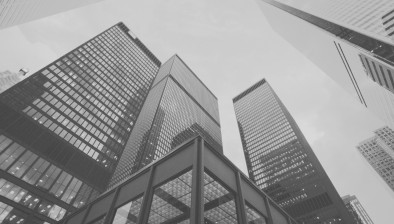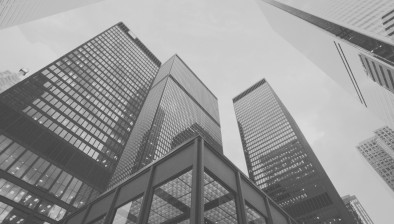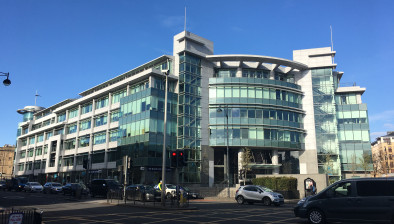Scottish commercial property robust against uncertain backdrop

Investment in Scotland’s commercial property market remained resilient in the first six months of the year despite political instability, according to analysis from Knight Frank.
The independent real estate consultancy found that £804 million was spent in Scotland in H1 2017, down 11.8% on the same period in 2016 – but healthy given the political uncertainty experienced in the first half of the year.
The news comes as separate analysis from the Scottish Property Federation (SPF) revealed the first consecutive quarterly drop in Scotland’s commercial property sales values since 2012.
According to Knight Frank, Edinburgh saw the highest levels of activity between January and June, with £326m spent on commercial property, compared to £401.16m in the first half of last year. Among the biggest deals of the period were the sales of Exchange Place 1, 2 and 3 for a reported total of £83m and the sale of Silvan House in Corstorphine for £18m.
Glasgow was broadly in line with the same period in 2016, with £182.05m spent in the first half of 2017 and £189.5m in the first six months of last year. Among the biggest deals was Credit Suisse’s £28m purchase of Cuprum in Glasgow’s International Financial Services District.
Trading volumes in Aberdeen continued to recover from the challenges of the sustained low oil price with £80m invested in commercial property, compared to £49.46m in H1 2016. The majority of this figure was made up by LCN Capital Partners’ purchase of Prime Four Business Park for £43.2m.
Alasdair Steele, head of Scotland commercial at Knight Frank, said: “Despite the overall figure dropping, the first half of 2017 has seen a steady level of investment. Edinburgh, in particular, had a strong first half in 2016, so it is encouraging to see that transactional levels so far this year are broadly keeping pace. There are a number of deals on the verge of going through in the capital which make us confident of a strong second half to the year.
“Recent transactions suggest prime office yields remain at 5.25%; although, there is some evidence of downward pressure, as demand remains strong and stock continues to be hard to find. Despite this, yields still look reasonable value compared to many European cities, especially when the cost of Sterling is taken into account.
“What’s more, the announcement of the Edinburgh Region City Deal is a welcome boost to the city and its surrounds. The £1 billion investment marks a significant opportunity and we’d expect to see this have a positive impact on Edinburgh property, as well as the wider business community.”
John Rae, head of Knight Frank’s Glasgow office, added: “Investment volumes in Glasgow have been lower than in Edinburgh – but it’s still been a resilient period, despite political uncertainty pervading. Sentiment towards the city has definitely improved in the past 12 months, backed by a strong occupier market and major political events seemingly out of the way for now.
“Our outlook for Glasgow remains positive: we’re hopeful the second half of the year will see a renewed level of activity. A number of big deals could be on the horizon in the office and retail sectors, both in the central business district and out of town. There are large, prime assets on the market, such as Great Western Retail Park, which is up for sale at a price of £80m.”
Meanwhile, figures released from the Registers of Scotland and analysed by the Scottish Property Federation (SPF) found that the total value of commercial property sales in Scotland has fallen in two consecutive quarters for the first time since 2012.
The total value of commercial sales in Q2 2017 (April to June) fell to £785m, down from £795m in Q1 2017 and £982m in Q4 2016. The figures also show that there was a year-on-year decline in the value of commercial sales, which were 4.2% lower than in Q2 2016.
Investment in Scottish commercial real estate also fell sharply with CoStar reporting £330m invested across all commercial property sectors in Q2 2017 - a drop of 60% quarter-on-quarter and 42% below the five-year average.
Regionally, Edinburgh continued to show its strength with £260m worth of sales in Q2 2017, accounting for a third of the Scottish commercial property market value in the quarter. The Capital also sustained its dominance of the market in Scotland with strong year-on-year growth in total sales values, up 16.6% compared to Q2 2016. This is in contrast with Glasgow, for example, which saw a 9.7% fall in sales values.
A partial recovery appears to be taking place in Aberdeen after challenging market conditions in 2015 and 2016 caused by the collapse in oil prices. In the first 6 months of 2017 the total value of commercial transactions in Aberdeen was £177m, up from £75m in the same period in 2016 - an increase of 136%.
David Melhuish, director of the SPF, said: “The figures reflect the unsettled and unequal nature of the current commercial real estate market in Scotland, with Edinburgh continuing to grow ahead of other locations.
“Despite better news recently for the wider economy in Scotland, the commercial real estate industry is not seeing this translated into increased sales and investment.
“We expect the commercial property investment market to continue to be a challenging environment to operate in the immediate future, making it more vital than ever for Scotland to show that it is open for business and is willing to compete for investors.”























